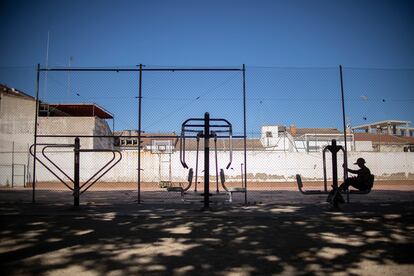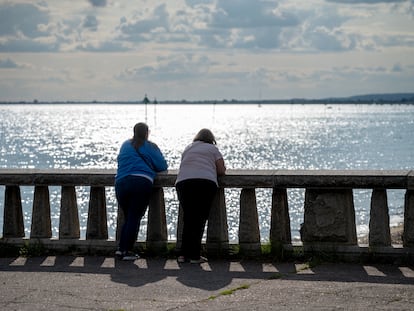Low socioeconomic status favors a sedentary lifestyle and risks health
Government interventions targeting physical activity should focus on disadvantaged people and areas with few resources to reduce health inequalities

It is obvious that there are socioeconomic inequalities between people. And we know that these are based on economic income, level of education, employment status or occupation, and ethnicity. We also know that these inequalities have an impact on people’s health.
It is generally the case that the areas where individuals of a low socioeconomic status live are more economically disadvantaged and have a higher prevalence of unfavorable health-related behaviors, with a greater risk of morbidity and mortality. The healthy behavior model of the 1980s advanced the idea that unhealthy habits such as smoking, low intake of fruit and vegetables, and a sedentary lifestyle are more predominant among individuals at the lower end of the socioeconomic scale.
If we want to reduce health inequalities, it is important to understand the interaction between socioeconomic status and healthy behaviors. The amount of physical activity that an individual does (or whether they have a sedentary lifestyle) interacts with socioeconomic status. So much so that in 2020 a World Health Organization (WHO) working group identified a gap in the knowledge in understanding the role played by socioeconomic status and its relationship with the amount of physical activity an individual does, and the impact that the combination has on health — essential to reducing health inequalities.
An inverse association between one’s socioeconomic status and the amount of physical activity has been demonstrated, although with limitations. This means that more highly educated people with better jobs and a higher level of income are generally more physically active. And the inverse is also true. Even when the exposure to risk factors is similar, groups with lower socioeconomic status have worse general health indicators. This phenomenon is known as the vulnerability hypothesis.
In line with this hypothesis, we might consider that this harmful association of low levels of physical activity and a highly sedentary lifestyle, which has negative effects on health, is stronger in groups with low socioeconomic status. A recent study with more than 300,000 participants aged 40 to 69 confirmed this hypothesis in relation to physical activity. The study suggests that unhealthy behaviors, specifically a sedentary lifestyle, may cause more harm in lower socioeconomic groups. The vulnerability hypothesis also affects older people. For example, a systematic review examining the effects of socioeconomic status on how retirement impacts physical activity and sedentary behaviors suggests that retirement has a more favorable impact on groups of individuals with a higher socioeconomic status.
The ecological model that attempts to explain why some people are active, while others are not, suggests that both the physical and social environment (economic conditions, social norms, urbanization, industrialization, etc.) are important determinants of physical activity. Although there is still not enough research to fully understand the relationship between socioeconomic level and physical activity, it seems clear that more disadvantaged environments do not help to initiate or maintain healthy lifestyles.
This is why public health interventions aimed at physical activity and sedentary behavior should focus on people and areas of lower socioeconomic status in order to reduce or narrow health inequalities. What is more, these interventions would present a higher cost-benefit return.
Sign up for our weekly newsletter to get more English-language news coverage from EL PAÍS USA Edition
Tu suscripción se está usando en otro dispositivo
¿Quieres añadir otro usuario a tu suscripción?
Si continúas leyendo en este dispositivo, no se podrá leer en el otro.
FlechaTu suscripción se está usando en otro dispositivo y solo puedes acceder a EL PAÍS desde un dispositivo a la vez.
Si quieres compartir tu cuenta, cambia tu suscripción a la modalidad Premium, así podrás añadir otro usuario. Cada uno accederá con su propia cuenta de email, lo que os permitirá personalizar vuestra experiencia en EL PAÍS.
¿Tienes una suscripción de empresa? Accede aquí para contratar más cuentas.
En el caso de no saber quién está usando tu cuenta, te recomendamos cambiar tu contraseña aquí.
Si decides continuar compartiendo tu cuenta, este mensaje se mostrará en tu dispositivo y en el de la otra persona que está usando tu cuenta de forma indefinida, afectando a tu experiencia de lectura. Puedes consultar aquí los términos y condiciones de la suscripción digital.
More information
Archived In
Últimas noticias
Most viewed
- Sinaloa Cartel war is taking its toll on Los Chapitos
- Oona Chaplin: ‘I told James Cameron that I was living in a treehouse and starting a permaculture project with a friend’
- Reinhard Genzel, Nobel laureate in physics: ‘One-minute videos will never give you the truth’
- Why the price of coffee has skyrocketed: from Brazilian plantations to specialty coffee houses
- Silver prices are going crazy: This is what’s fueling the rally











































